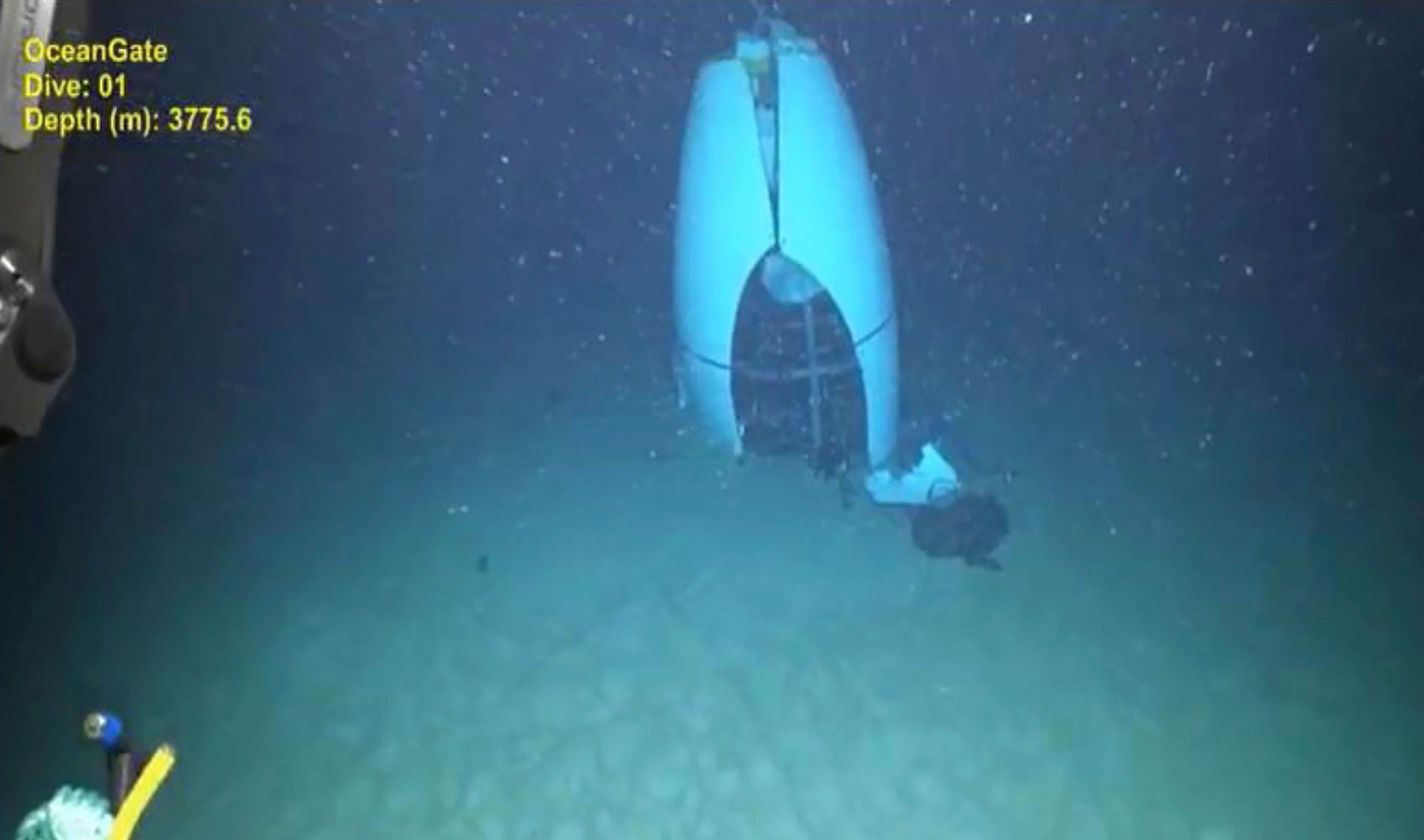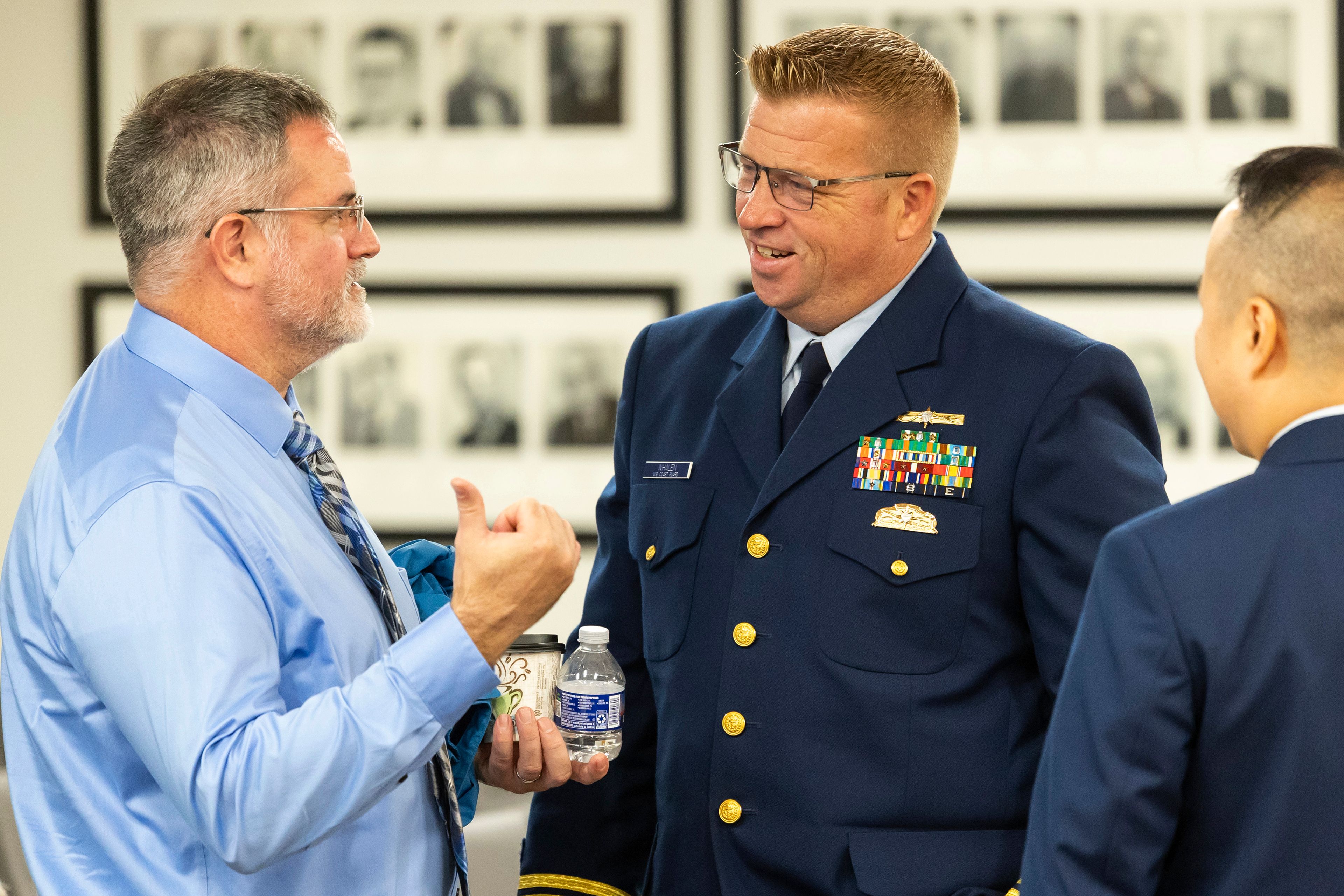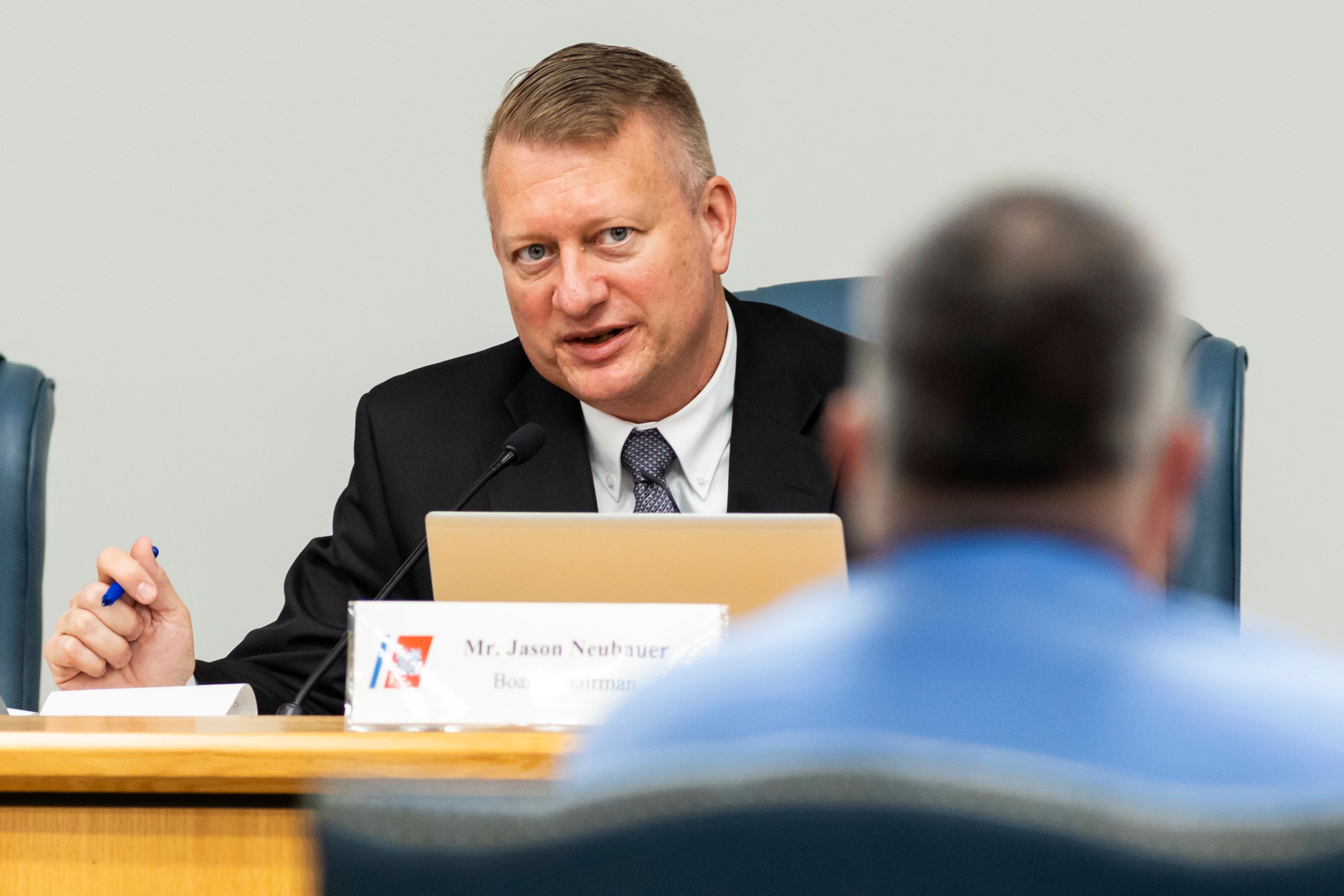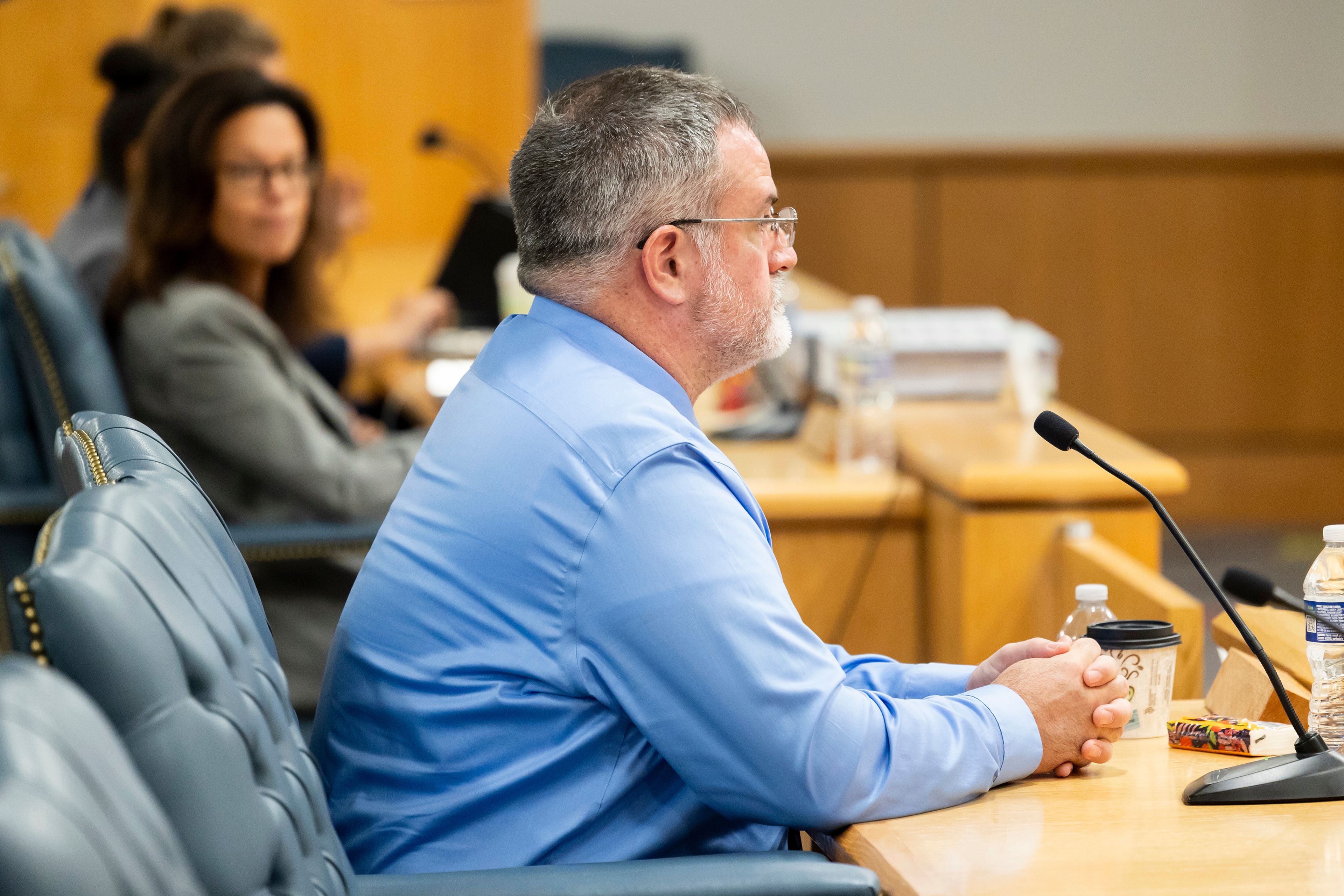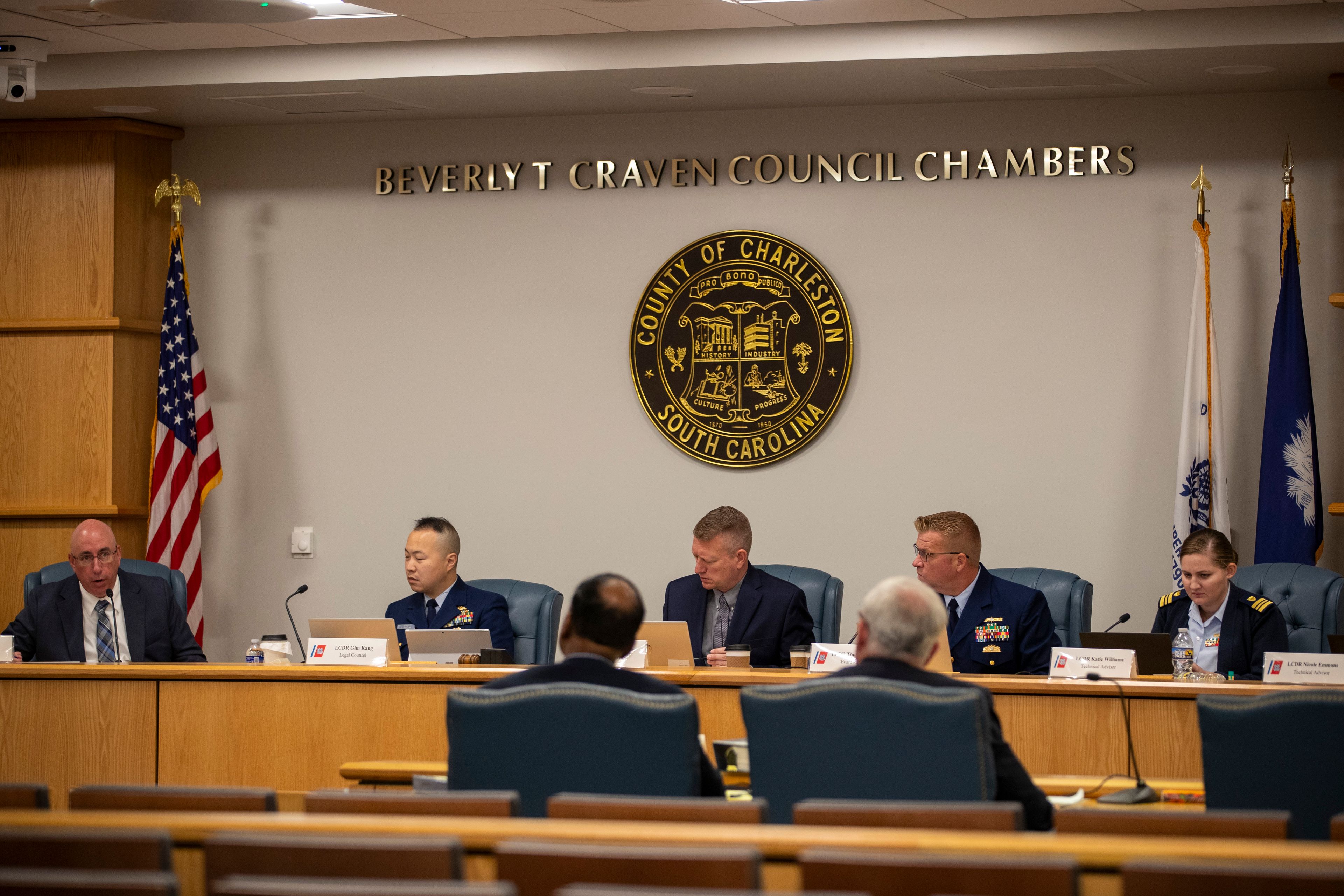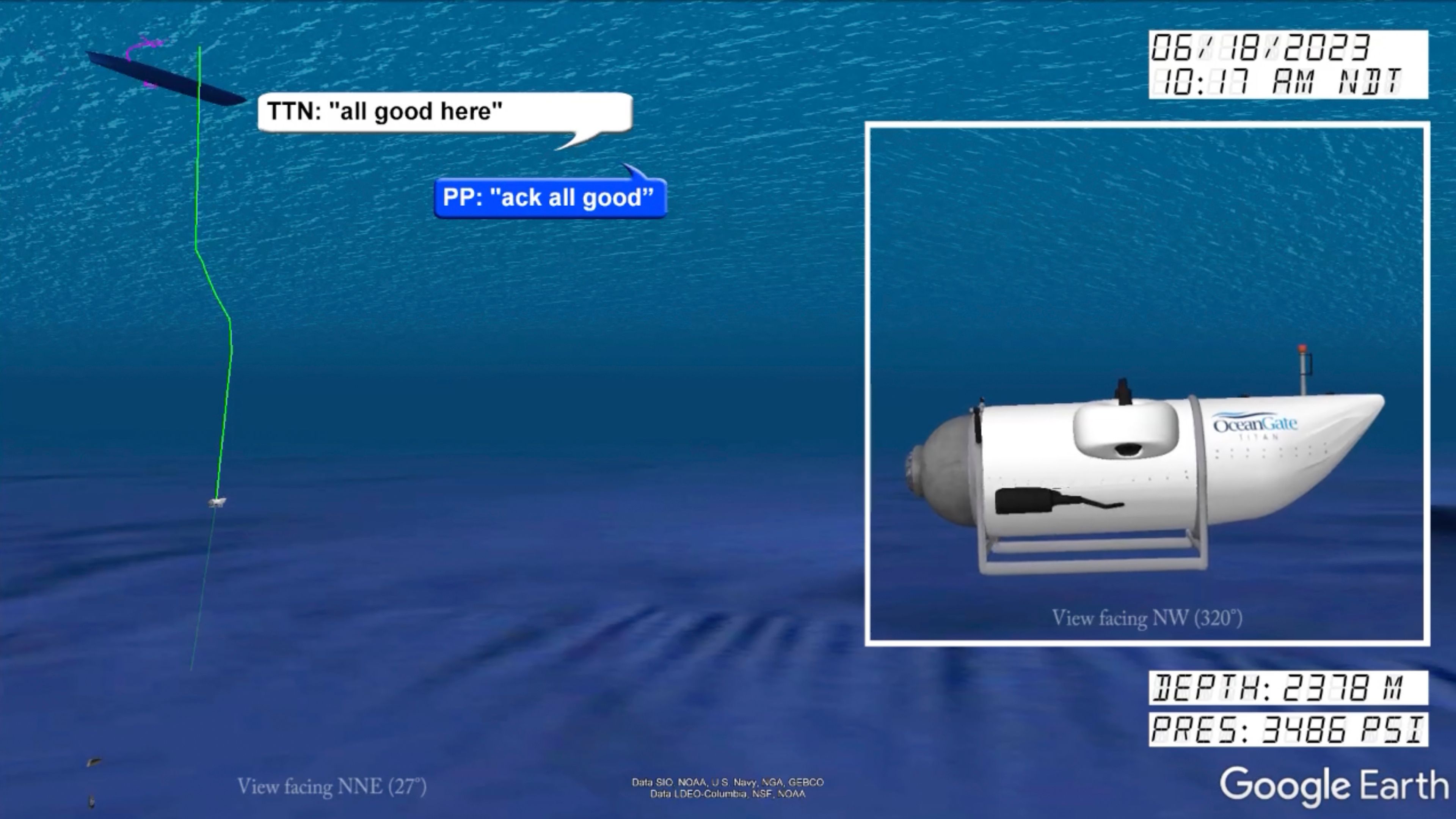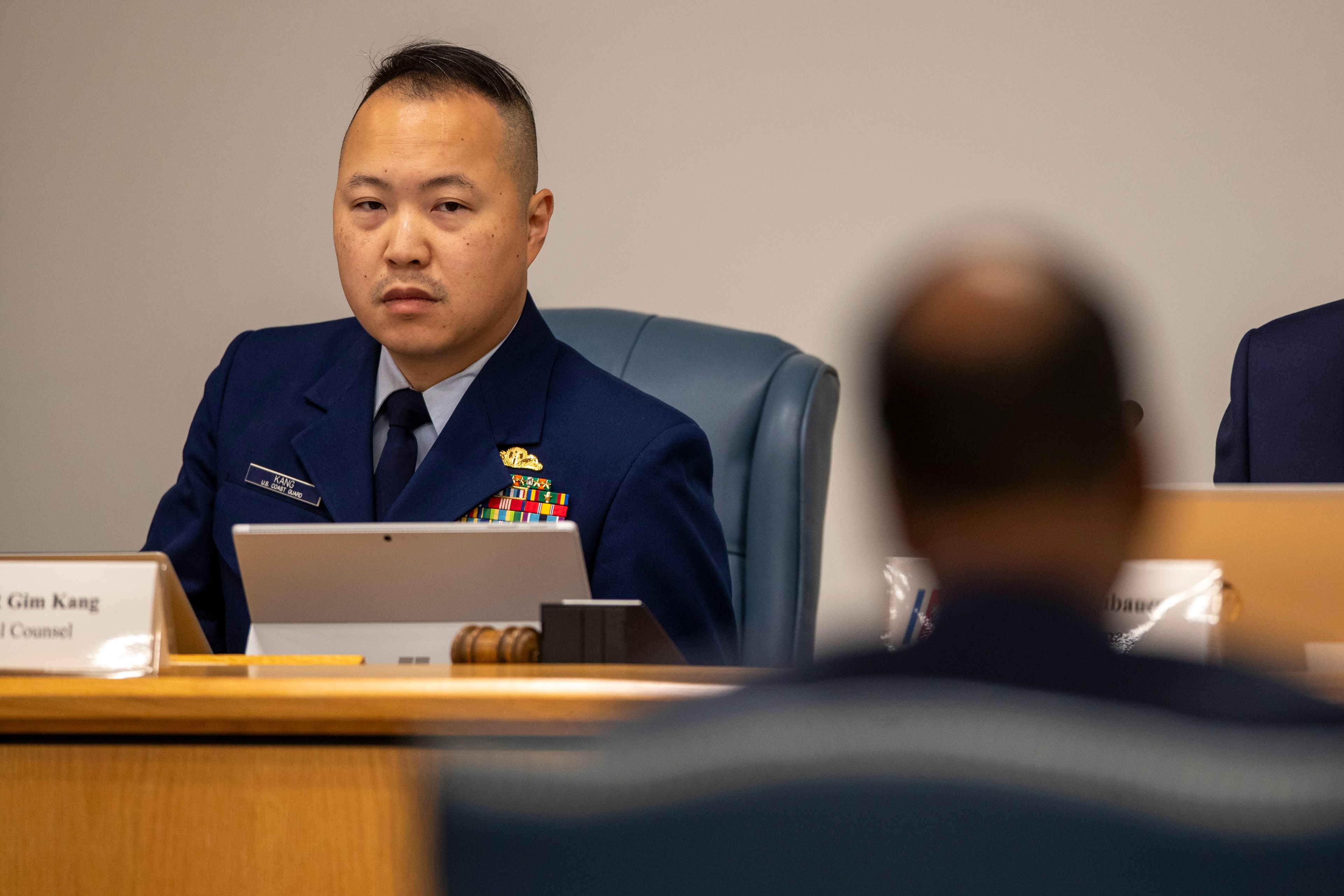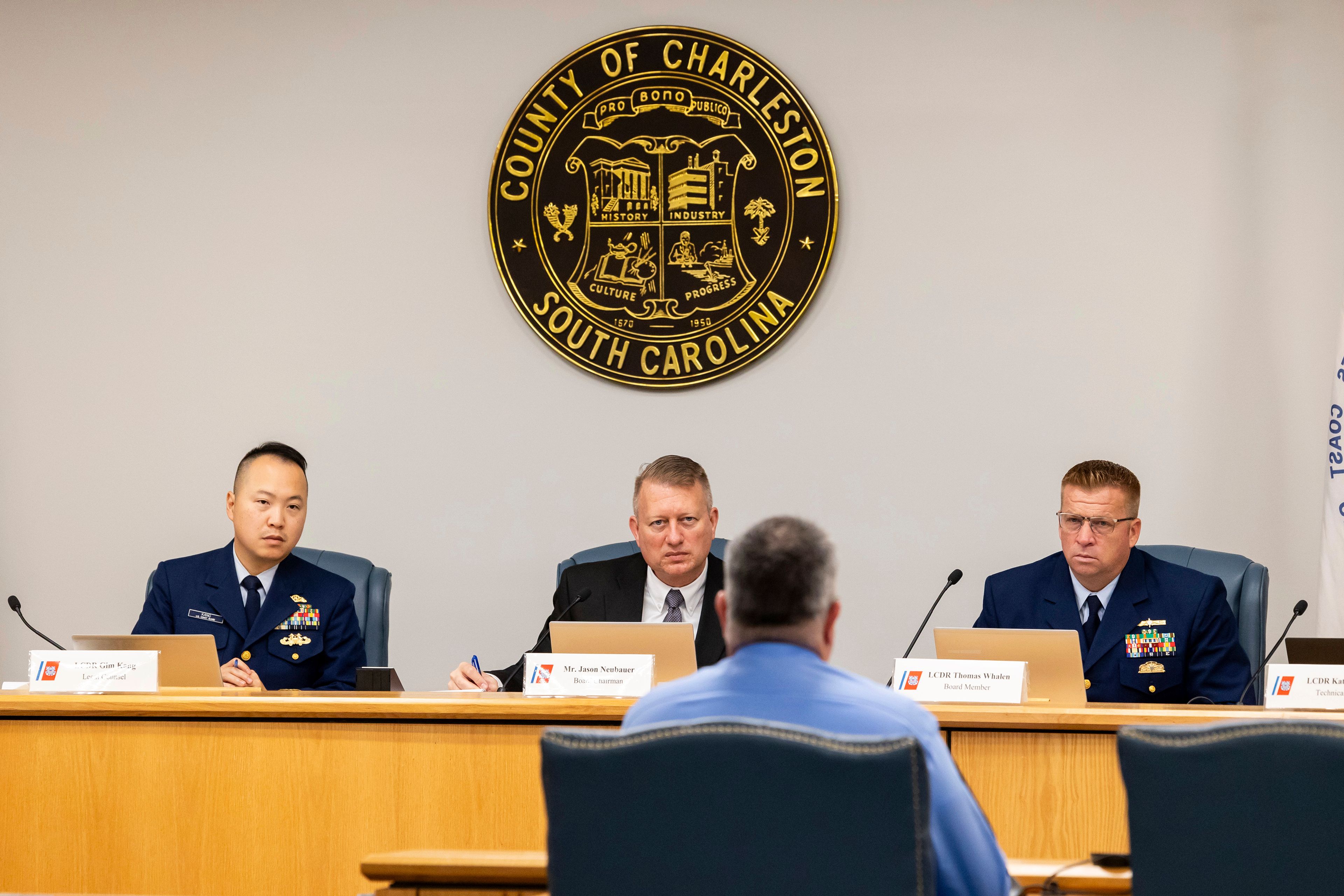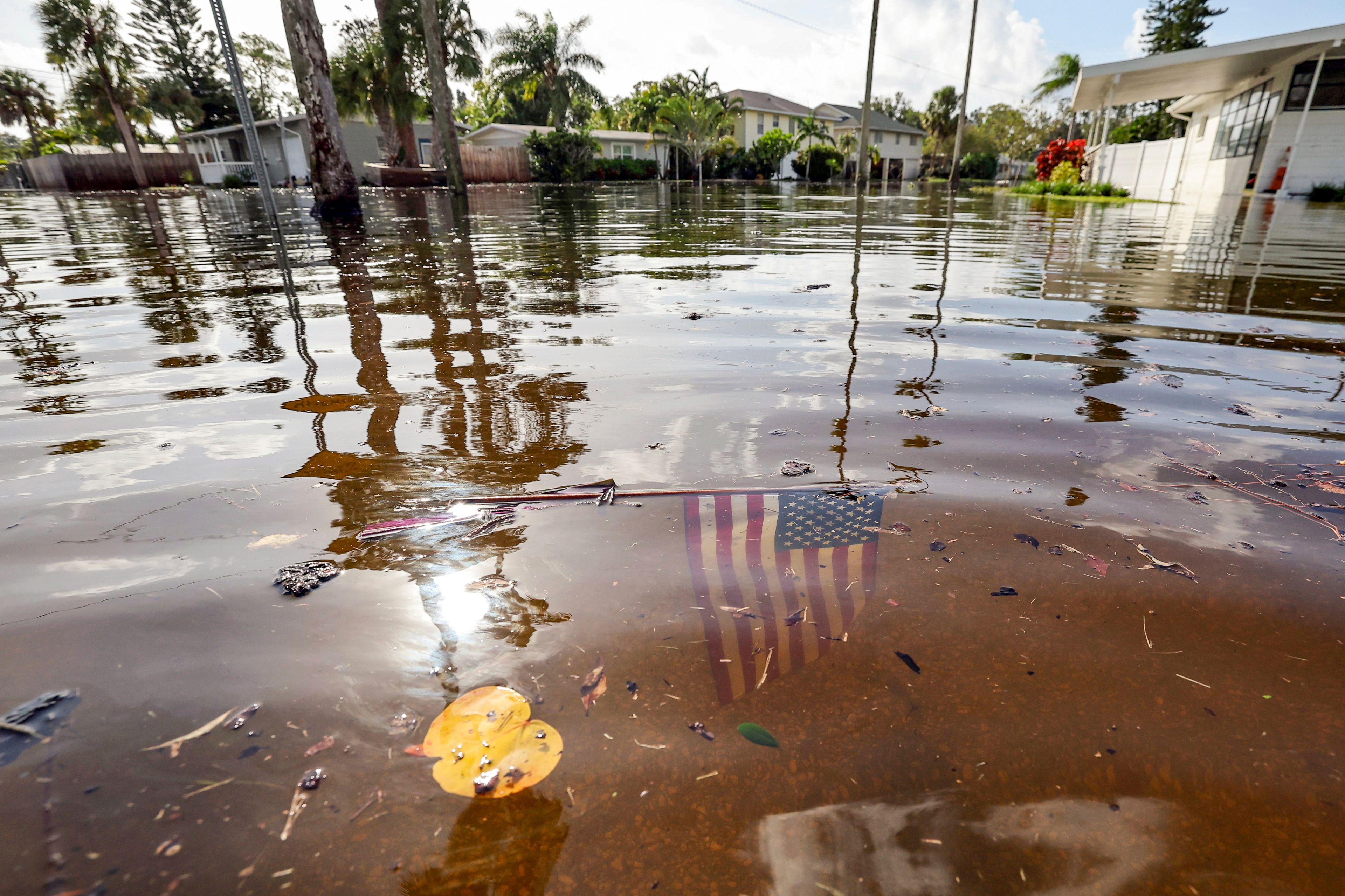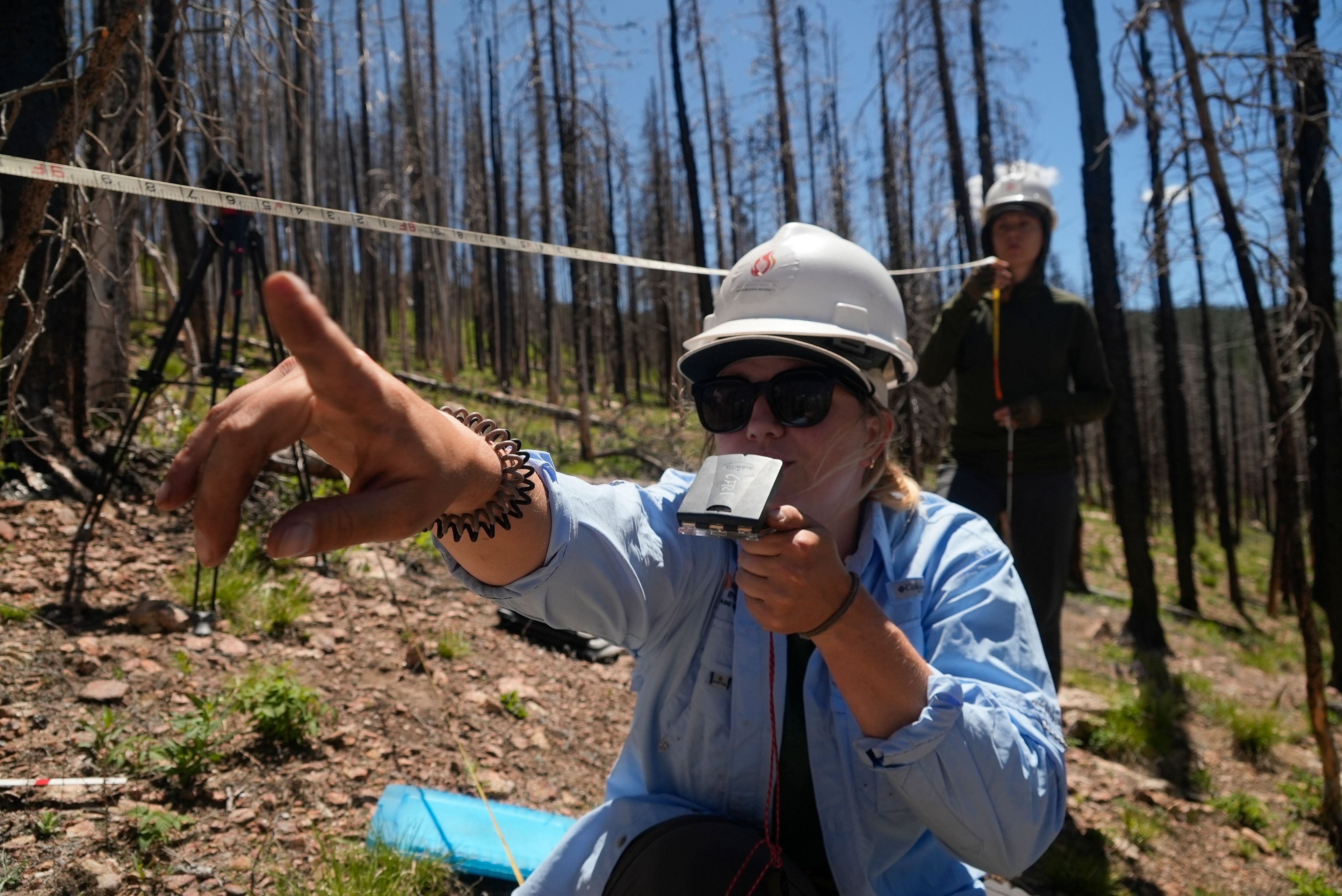Capt. Jamie Frederick, commander of Coast Guard district based in Boston, testified Friday that he was surprised to learn at the hearing that the crew of the Polar Prince support vessel, in hindsight, felt a slight shudder around the time the Titan sub imploded on its way to the Titanic.
At the time, the Polar Prince crew apparently didn’t think much it, but Frederick said it was “unconscionable that they wouldn’t share that.”
While there were conflicting reports of sounds heard underwater, Frederick said the Polar Prince report would have been important information for searchers. “It certainly would’ve changed the equation,” he testified. He stopped short of speculating on whether the Coast Guard would have opted against a search.
THIS IS A BREAKING NEWS UPDATE. AP’s earlier story follows below.
Witnesses testified that the company that operated an experimental deep-water submersible that imploded, killing five people, put profits over safety and ignored warning signs before the disaster. Several company officials, meanwhile, spoke of the explorer spirit and taking calculated risks to push humankind’s boundaries.
Those different viewpoints emerged as the Coast Guard panel on Friday wraps up two weeks of testimony on the Titan disaster last year. The panel is tasked with determining why the carbon-fiber submersible was lost 12,500 feet (3,810 meters) deep on the ocean floor near the wreck of the Titanic.
Testimony painted contrasting images of greed and hubris as OceanGate sought out well-heeled clients for its submersible made from carbon fiber — a material that was untested at such depths — versus modern-day explorers who carefully considered risks as they sought to open the deepest depths of the world’s oceans to more people.
On Friday, Matthew McCoy, a Coast Guard veteran who served for several months as operations technician for OceanGate, also said he had safety concerns when he learned the company broke ties with the University of Washington’s applied physics lab, that Boeing wasn’t going to construct the carbon fiber hull, and that the thickness of the hull had been reduced.
He also had concerns about the financial model when he learned there would be paying passengers.
At a lunch meeting to raise concerns, OceanGate co-founder Stockston Rush told McCoy the vessel would be flagged in the Bahamas and launched from Canada to avoid U.S. regulations, McCoy said. McCoy said there could be U.S. regulatory concerns if it went to a U.S. port and Rush told him, “If the Coast Guard became a problem, then he would buy himself a congressman and make it go away.”
McCoy said it was a “tense” conversation and that he was “aghast.” He resigned.
Guillermo Sohnlein, who helped found OceanGate with Rush, described the lofty goal “to give humanity greater access to the ocean, specifically the deep ocean.” Using carbon fiber for the pressure hull was hardly a novel idea, he said, and noted Rush himself was the first human to test the design.
But former operations director David Lochridge said the company was committed only to profit making.
“The whole idea behind the company was to make money,” he testified. “There was very little in the way of science.”
Witnesses could not even agree on what to call the wealthy clients who paid $250,000 for the experience. Some said they were simply passengers, even though OceanGate called them “mission specialists” who were given tasks.
Killed in the implosion were Rush and four others including Paul-Henri Nargeolet, who was director of underwater research for RMS Titanic, which holds the legal rights to salvage the wreck of the ship. Nargeolet’s family is suing for more than $50 million, accusing the sub’s operator of gross negligence.
The carbon-fiber pressure hull of Titan was the subject of much of the discussion. An expert witness, Roy Thomas, senior principal engineer at the American Bureau of Shipping, testified that carbon-fiber may be strong and light, but that it’s tricky to manufacture. Carbon fiber also is “susceptible to fatigue failure” under repeated pressurization and salt water can weaken the material in multiple ways, he said.
Coast Guard officials noted at the start of the hearing, held in South Carolina, that the submersible had not been independently reviewed, as is standard practice.
Witnesses testified they had heard loud cracking sounds in past descents. And scientific director Steven Ross said that, on a dive just a few days before the Titan imploded, the vessel became unstable because of a ballast problem, causing passengers to tumble and crash into a bulkhead.
During its final dive on June 18, 2023, the crew lost contact after an exchange of texts as it descended. One of the last messages from Titan’s crew to the Polar Prince support ship before the submersible imploded stated, “all good here.” The crew of Polar Prince, meanwhile, grew increasingly concerned.
Ships, planes and other equipment assembled for a rescue operation about 435 miles (700 kilometers) south of St. John’s, Newfoundland. Wreckage of the Titan was subsequently found on the ocean floor about 330 yards (300 meters) off the bow of the Titanic, Coast Guard officials said.
Capt. Jamie Frederick, commander of Coast Guard district based in Boston, testified Friday about the massive effort to bring together experts and resources for the search, and he noted that OceanGate had no emergency backup plan. “We brought a team together, came up with a plan,” he said.
After receiving reports of noises from the ocean floor, the Coast Guard-led team operated under the possibility there could be survivors until several days after contact was lost with the Titan, when the Navy said its analysis was "100% certain” that the sounds were not human in nature, Frederick said.
“As soon as we received that information, I shared it with the families before we released it to the media,” said Frederick, who personally handled the notifications to family members.
It took a massive effort to get a remote submersible capable of researching the ocean floor to the scene, he said.
Three C-17 military transport aircraft moved 70,000 pounds (32,000 kilograms) of gear to Canada’s Newfoundland, where it was transferred to a ship and transported to the scene, Frederick said. Once there, Pelagic Research Services' remote-operated submersible “Odysseus” quickly found the Titan’s debris field, he said.
